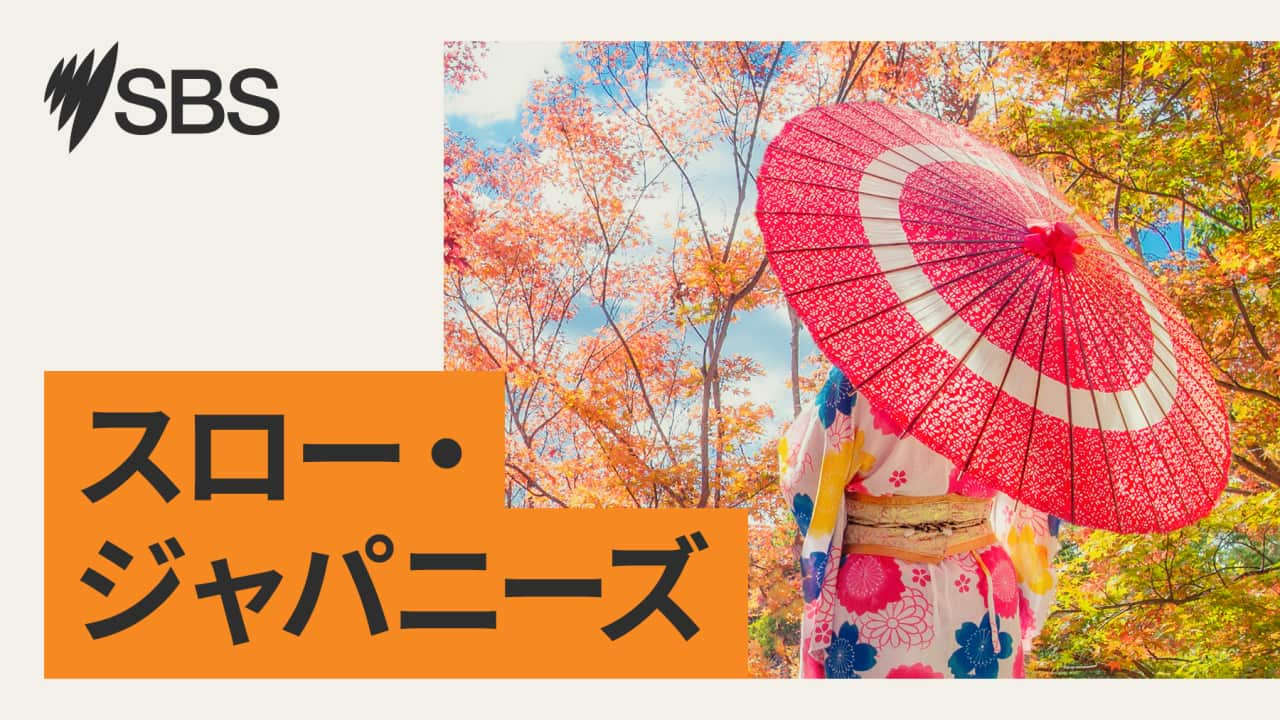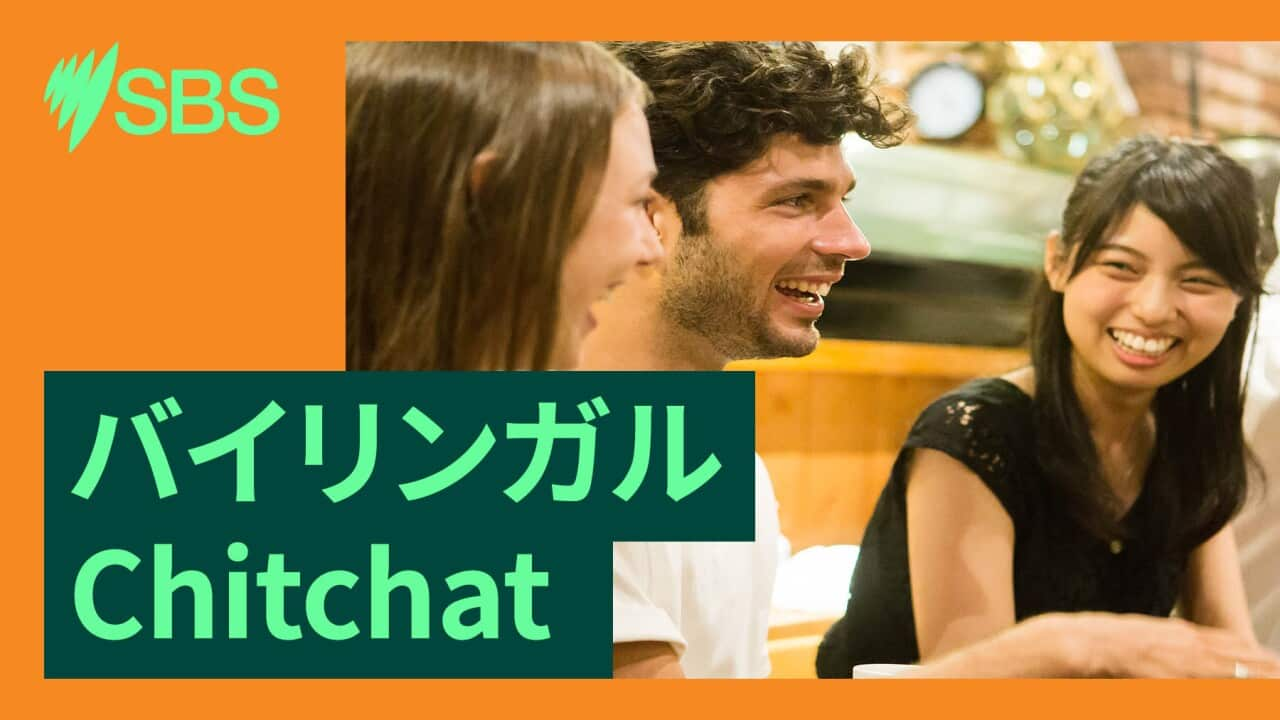Key Points
- Following World War Two, more than 650 Japanese women migrated to Australia as the wives of Australian servicemen.
- The granddaughters of Japanese war brides share how they keep their family’s stories alive through their work as an author, artist and historian.
- This year marks the 80th anniversary of the end of World War Two.
Growing up, Alli Parker would watch as her grandparents were interviewed by media.
Her Japanese grandmother, Nobuko Sakuramoto (aka Cherry Parker), married Australian Gordon Parker and, in the process, became the first Japanese “war bride” to come to Australia in 1952.
“My grandfather (Gordon Parker) said yes to every interview ... He knew it was important to keep this story talked about. If you go into the archives of Australian media over the past 75 to 80 years, about every decade, you’ll find a few different articles about the Parker family,” the author and screenwriter told SBS Japanese.

The reunited Parker Family grin as Cherry, Gordon and their children arrive at Essendon airport. L to R: Margaret, Venn, Cherry, Harry, Gordon and Kathleen. Credit: Press photo
The so-called war brides were women who migrated to Australia largely in the 1950s as the spouses of Australian servicemen. After the end of World War Two, more than 650 Japanese war brides came to Australia.
Japan-born Dr Keiko Tamura of the Australian National University (ANU) has conducted extensive interviews with Japanese war brides in Australia as part of her research.
She characterised the women as strong-willed and adaptable.
“There was an Australian military base in Kure city in Hiroshima prefecture. So, the Japanese war brides met Australian soldiers there. Against all opposition from family and friends, they chose to live in a country they had never been to,” Tamura explained.
“Because of the White Australia policy, there were not many Asians in Australia, let alone women from ex-enemy Japan. I think the war brides regarded themselves as representatives of Japan so they worked hard to meet society's expectations.
“Of course, it was a difficult time for them.”
Honouring the legacy
With many war brides having passed away, and those living now over 90 years of age, Parker felt it was important to preserve their stories.
In 2023, Parker published her first historical fiction novel, At the Foot of the Cherry Tree, based on the story of her grandparents.
“I had always dreamed of being a writer and I’d dreamed of telling my grandparents’ story ever since I was a little kid. I knew the story was really important and I didn’t want it forgotten,” she said.

The entire Parker family in the 1960s. L to R: Gordon, Linda, Ian, Ed, Jen, Rob, Harry, Kathy, Margie and Cherry. Credit: Press photo
“The readers’ favourite character is definitely Nobuko (Cherry),” Parker said.
“(It was great) to see people who had never heard of Japanese war brides before suddenly know all about the context, what was happening, why they were significant. I even had people telling me they didn’t know about the White Australia policy.
“Whether it’s an older person or a younger person, it’s been so heartening to see how people have connected with the story.”

Japanese-Australian author and screenwriter Alli Parker with her grandmother Cherry Parker at Christmas 2019. Credit: Alli Parker
“I don’t look very Japanese at first glance for most people. I never really got any backlash," she said.
Still, the author said that since her book release she has experienced a "different kind of racism" with some people questioning whether she is Japanese enough to tell this story.
“But it’s so small compared to what my grandmother went through. And what dad and his brothers and sisters went through.”

The extended Parker family and friends at Cherry's 90th birthday in 2019. Credit: Alli Parker
Importance of telling stories
Historian Anna Wilkinson is pursuing her PhD with research on Asian war brides in Australia, including those from Japan.
Wilkinson’s grandmother, Yachiyo, who goes by the name Ivy in Australia, is a Japanese war bride who just turned 99.
“She (Yachiyo) had four children, so the family is really big. When we get together, it’s always a little bit chaotic in the best way. From quite a young age, we would eat together. She would tell us stories about her life … so our relationship is mainly eating together and talking,” Wilkinson said.
For her thesis, Wilkinson had many “difficult” discussions with her grandmother.
“Obviously when you are doing it for a thesis or a piece of historical work, it’s very different from having a talk with your granddaughter about fun stories about life,” she said.
“Particularly when issues of harder times, racism, loneliness came up, I think that was quite confronting. But also, (I) can tell from what she said and how the conversation went, she really felt those stories needed to be told.
“For so long, issues of racism had been very taboo. Maybe because she is a lot older now, or because my grandfather has passed away, she was more comfortable opening up.”

Historian Anna Wilkinson with her grandmother Yachiyo. Credit: Anna Wilkinson
“On a personal level, I think people have a desire to know where they came from and why their parents are the way they are, why their family functions the way it does. On a broader level, it helps us to understand why our country is the way it is. Certainly, it influences policy, particularly the relationship between Australia and Asia, both politically and culturally,” she said.
“I think that is really important for today, especially today, to create a more cohesive world.”
Passing the baton
For artist Elysha Rei, becoming a mother in her early 20s brought her and her grandmother, Akiko Kirkham, nee Hirano, even closer.
“I’d visit her as often as I could, have a meal with her and ask her lots of questions about her life in Japan, how she met my grandfather, her early life in Australia in the ‘50s and ‘60s, and she was generous with her storytelling and passed on some information about our ancestors,” Rei said.
“That had really a big impact on me not just as a young woman but as a mother, and subsequently as an artist as well.”
She described her grandmother’s journey as “really profound”.
“She kind of paved the way for other people to come to Australia at the time when the White Australia policy was in full effect. I had a sense of ownership and pride about our family’s stories, and wanting to really represent that in the work that I create.”

Japanese-Australian artist Elysha Rei (left) and her grandmother Akiko Kirkham. Credit: Elysha Rei
“I was looking through it and I became quite emotional actually. Because there was personal information about her, like describing her features. She had to undergo a lot of medical tests before she was allowed into Australia. There was a photograph of her with my auntie sitting on her lap,” Rei said.
“Seeing her documented in the archives (I realised) also just how politicised her identity was in the language which was used in these papers.”

'Rabbit (proof) fence' by Elysha Rei. Credit: Elysha Rei
The artwork demonstrates how Akiko – who was born in the Year of the Rabbit – managed to make a hole in the fence, arriving in Australia in 1953 and raising a family of four children.

Akiko Kirkham (nee Hirano). Credit: Elysha Rei
“When she was in Australia in the ‘50s, there were no Asian grocery stores. Ingredients were really hard to come by, but she was craving Japanese cooking. She improvised by getting Vegemite and diluting it with water, and she used that as a soy sauce substitute,” Rei said.
“(The story) shows (her) adaptability and resilience, and I think it’s a fantastic way to demonstrate how she persevered but also adapted to her surroundings.”
Listen to SBS Japanese Audio on Tue, Thu and Fri from 1pm on SBS 3.
Replays from 10pm on Tue, Thu and Sat on SBS1.





